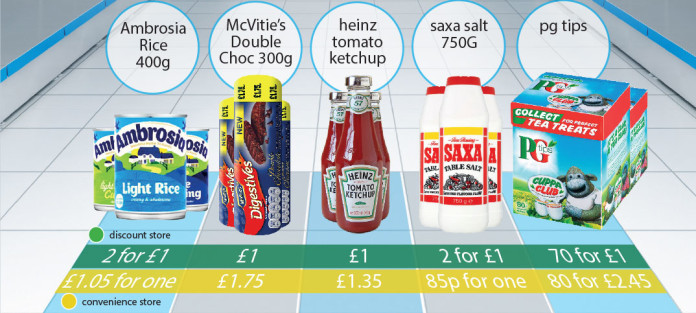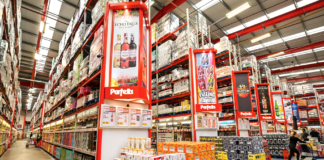Consumers are increasingly savvy about grocery pricing, but many small stores owners don’t sell products at sensible prices, argues David Gilroy
I’m buying milk at my local convenience store. It looks a little expensive at £1.59 for 2l but hey ho it’s got to be done. We need it now. Then I alight on my favourite half-coated chocolate biscuits, price-marked at £1.75 for 300g. It must be a good deal – they wouldn’t price-mark it if it wasn’t great value, would they?
I make it home safely with my purchases and present them for inspection. “Why did you buy these?” asks my wife.
I immediately sense that all is not well. “What’s the problem?” I retort.
“The problem is that I can buy these biscuits at Sainsbury’s for £1 most of the time. What are you thinking about?”
I have to reluctantly agree that she has a good point. It turns out that the milk is also out of line and is £1 at the supermarket. Lesson learned: scrutinise every purchase at the local store from now on. Can anybody be trusted?
Not always. Clearly the biscuit price of £1.75 is out of line with the wider market and is completely unrealistic. On further investigation, I find that the same product is in Poundland.
I decide to spend more time in the pound shops and find that many suppliers are creating products for this exciting channel. Good examples of this are PG Tips 70s and Whitworth’s granulated sugar 1.2kg packs, which are both designed to hit the £1 price ticket.
The discounters and the pound shops have re-written the pricing rules for the UK grocery market. Many long established British brands have commoditised themselves to fit this model.
Never before has grocery pricing been so transparent. Consumers are more price savvy now than at any other time in living memory and they will shop across the channels for a myriad (not fully understood) reasons. Channel delineation is being rapidly eroded and consumers will compare prices across discounters, pound shops, superstores, online sites and small shops.
What are the implications for the convenience channel? Convenience store pricing must demonstrate fairness. Consumers will accept that prices are slightly higher in small stores than in other destinations but not wide variations in price or they’ll feel like they’re being ‘ripped off’.
This channel is no longer a cash cow for milking. Price-marking must be carefully calculated, working back from consumer expectations and taking the wider market context into consideration.
It’s a sad fact that some owners of small stores cannot be trusted to sell their goods at sensible prices. They either do not have enough market intelligence or they are only focused on the gross margin. Far too often they price too high and they don’t pass on deals from their suppliers and wholesalers to their customers.
There is grounded empirical evidence to suggest that consumers prefer price-marked products in small stores. Price-marks instil confidence and authority and they also imply ‘promotion’. It is a proven fact that price-marked products sell through in greater volumes than straight packs in convenience stores.
However, suppliers must ensure that retailers’ cash and percentage margins are protected. Suppliers and wholesalers are responsible for positioning the price in the appropriate place versus the wider market. Failing to do this discredits the channel and small stores, destroying confidence. A rigorous approach, taking all the factors into account, will ensure that price-marking is right for everyone.








